Learn
Graphs of Logarithms
After completing the Introduction of this lesson, you should remember the exponential and logarithm graphs are inverses.
An inverse in its simplest form swaps the x and y cordinates. You should also realize that the domain and range of these graphs have swapped.
Let’s look just a little deeper.
Study the graphs below of logarithm graphs with base 2, 10, e.
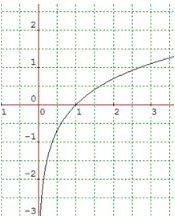
y = ln x
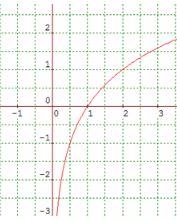
y = log2x

y = logx
Example #1
Use translations to graph f(x) = log(x − 2) + 3
Do you recall that the 2 in the equation moves the graph 2 units to the right and that the 3 moves the graph 3 units up?
Start with the parent graph.
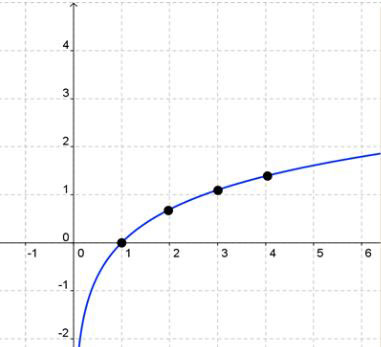
Select points and move them 2 units to the right and 3 units up.

Form the curve of the new graph.
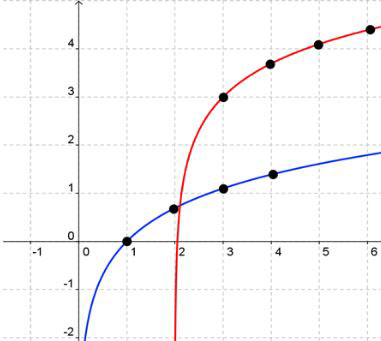
Give the domain, range, and asymptotes of the new graph and describe the end behavior.
- Domain: x > 2
- Range: all real numbers
- Asymptote: x = 2
- x-intercept: 2
- y-intercept: none
- As x appraoches 2 from the left, the graph tends to negative infinity and as x appraoches positive infinity on the right the graph tends to positive infinity.
Example #2
Solve ln 2(x + 4) = 3 by graphing using a graphing utility and verify using a calculator.
Remember how we made a system of equatoins from our problem in previous lessons?
y = 3 and y = ln 2(x = 4) will be our system.
Graph each on the same coordinate plane.
Graph: y = 3 and y = ln 2(x + 4) and locate the intersection.
Use GeoGebra and then sketch your graphs to check.
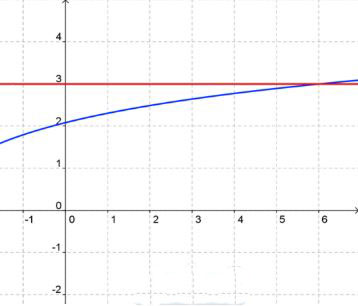
The intersection is (6 , 3). The solution to the problem is x = 6
Now, let’s verify by substituting our solution into the original equation.
ln 2(x +4) = 3
ln 2(6 + 4) = 3
Substitute in the value of x, 6.
Now, let’s verify.
ln 2(x +4) = 3
ln 2(6 + 4) = 3
Simply the argument, then use your calculator. Go to 4 decimal places.
ln 20 = 2.9957
which rounds to 3.00